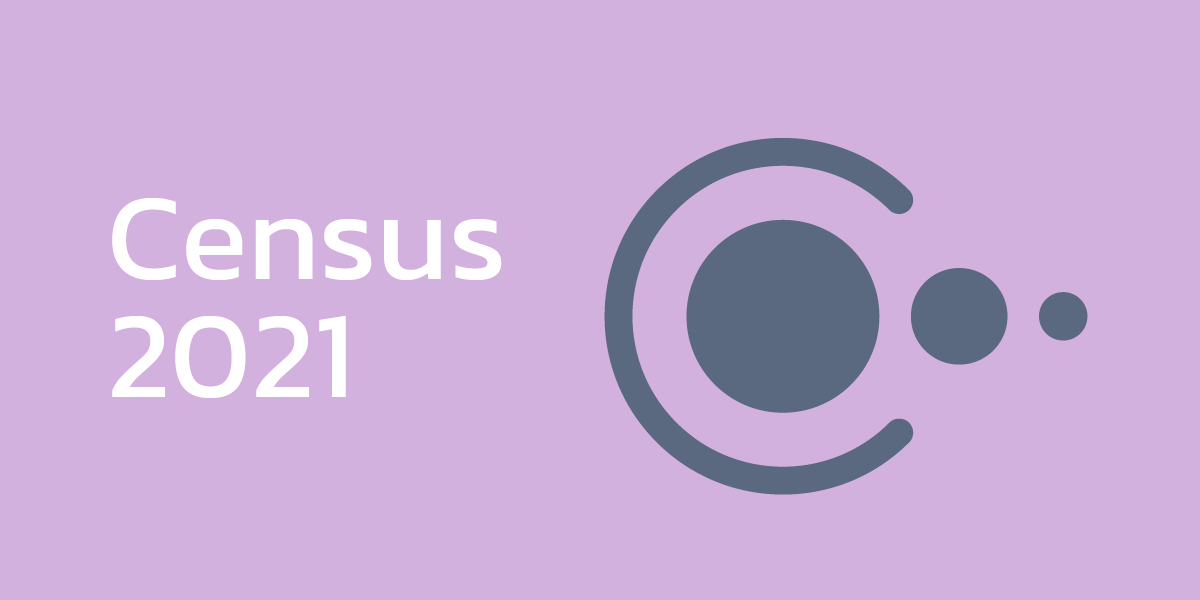
ONS has published all small-area data from Census 2021 – and there is a lot of it! While much of the data is a straightforward replication of indicators published in 2011, there are noticeable differences and additions. These differences often mean that we are unable to directly compare 2011 and 2021 figures, so are very useful to be aware of.
This resource provides a summary of what has been released and the key changes and additions to be aware of. We are focusing on univariate data, meaning data contains a single characteristic (e.g. ethnicity or age) but multivariate data is also available from ONS (e.g. ethnicity by age).
To date, we have added or updated more than 400 census indicators in Local Insight across all topic summaries.
Demography and migration
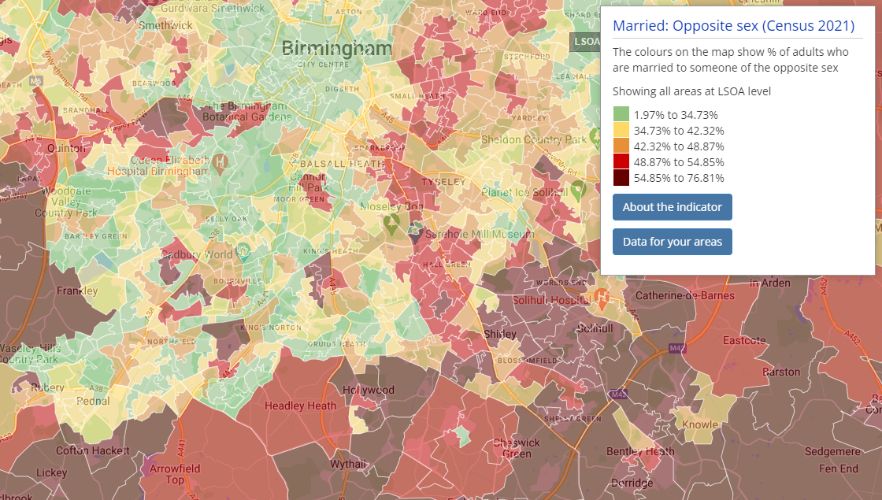
The demography and migration topic summary covers:
- Resident age and sex
- Household
- Number of Usual Residents in Households and Communal Establishments
- Legal Partnership Status
- Household Composition
- Households by Deprivation Dimensions
- Country of Birth
- Passports Held
- Length of Residence
- Age of Arrival in the UK
- Migrant Indicator
What’s changed?
Legal partnership status:
- There are new breakdowns for legal partnership status including Married: same sex as well as Married: opposite sex
- There are new definitions for separated including Separated: but still married and Separated: but still in registered civil partnership
- There are new breakdowns for civil partnerships to distinguish between same sex and opposite sex civil partnerships.
Country of Birth:
- New breakdowns to include county of birth by continent
- European Union countries are also broken down into EU14, EU8 and EU2.
Household composition:
- One of the age brackets has changed from ‘65 and over’ to ‘66 and over’ so no longer provides a direct comparison.
UK armed forces veterans
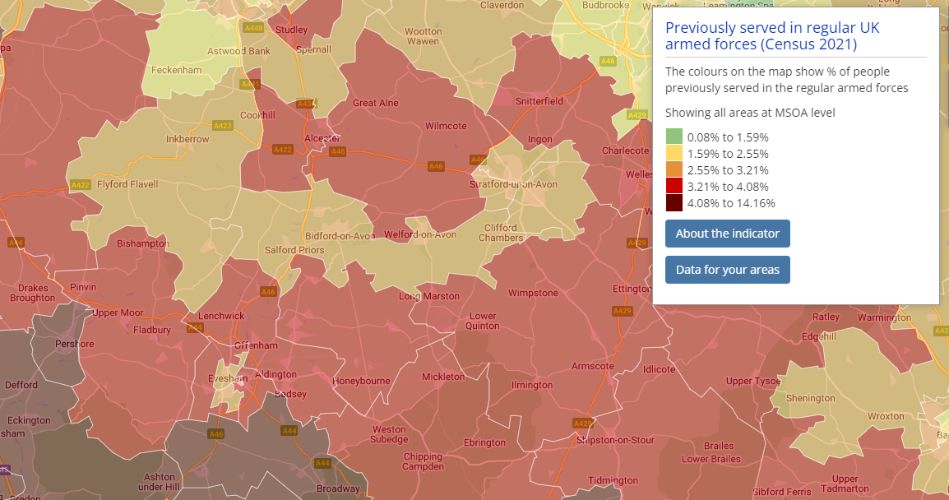
The UK armed forces veterans topic summary covers:
- Household reference person indicator of previous service in UK armed forces
- Previously served in the UK armed forces
- Number of people in household who have previously served in UK armed forces
- Population who have previously served in UK armed forces in communal establishments and in households
What’s changed?
The following datasets have been introduced to the census for the first time in 2021:
- Household reference person indicator of previous service in UK armed forces
- Previously served in the UK armed forces
- Number of people in household who have previously served in UK armed forces
Ethnic group, national identity, language and religion
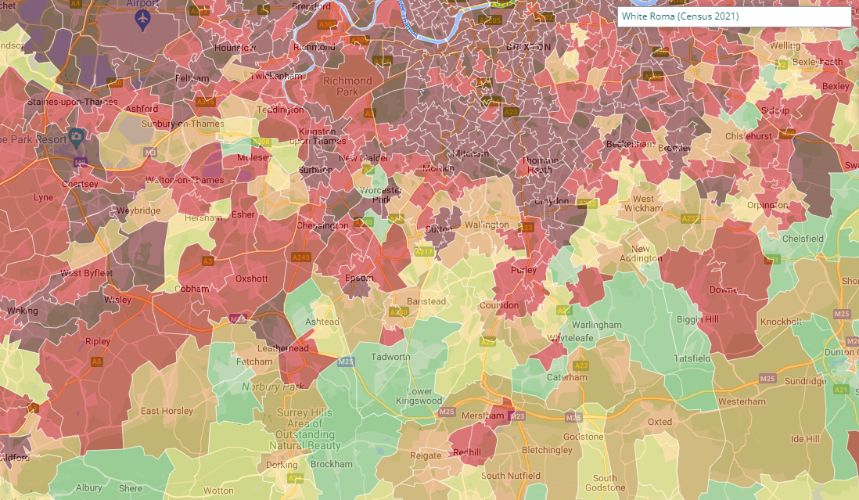
The ethnic group, national identity, language and religion topic summary covers:
- English language proficiency
- Ethnic Group
- Household language
- Households with multiple ethnic groups
- Households with multiple languages
- National identity
- Religion
What’s changed?
Ethnic group
- White: roma has been added as an group
National identity:
- Kurdish has been added as a national identity as part of the detailed breakdowns
Welsh language
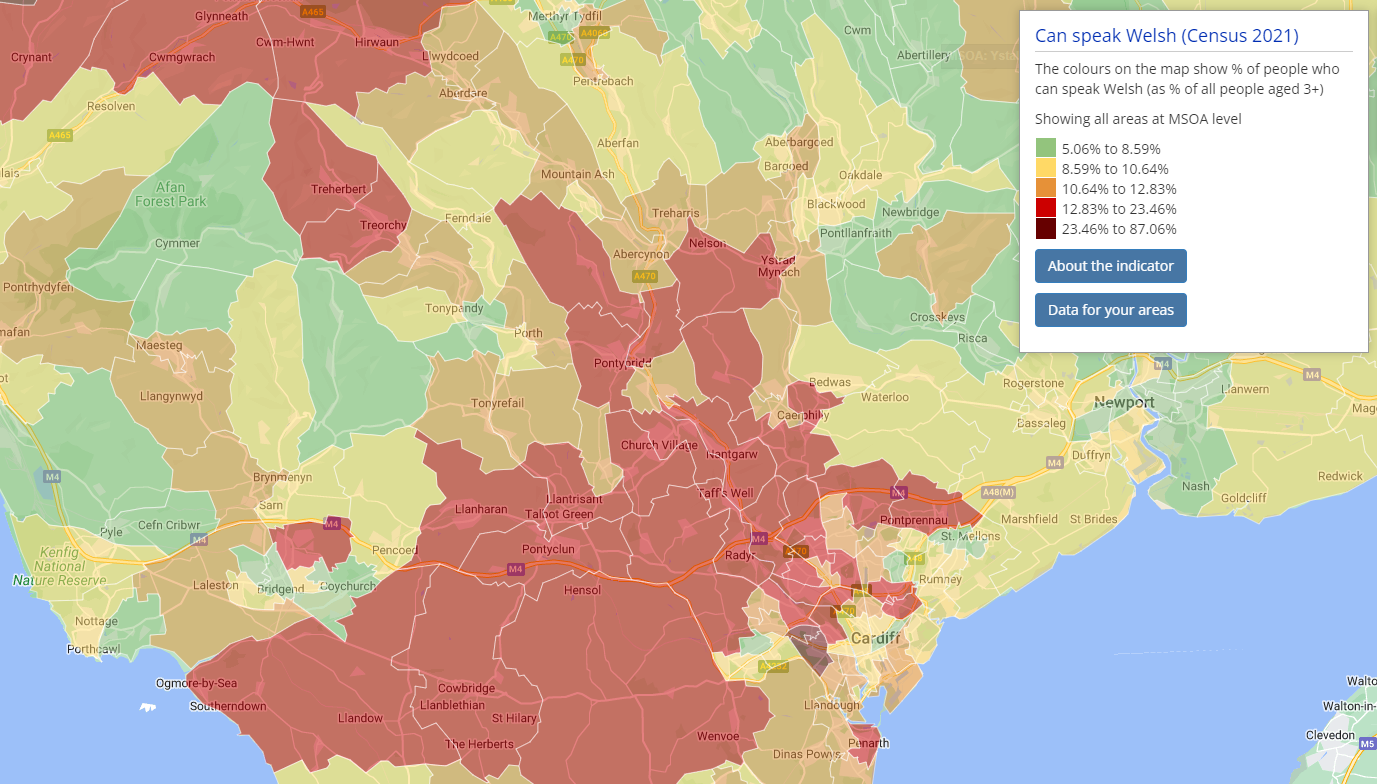
The Welsh language topic summary covers:
- Welsh skills (all)
- Welsh skills (speaking)
- Welsh skills (writing)
- Welsh skills (reading)
- Welsh skills (understanding)
What’s changed?
- There are now more detailed breakdowns on Welsh language compared to 2011, which had a single dataset called ‘Welsh language skills’.
Labour market and travel to work
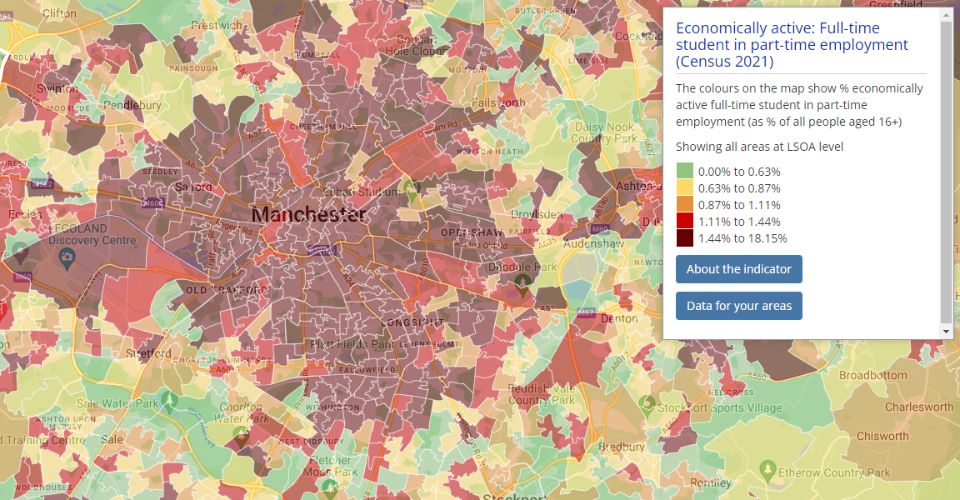
The labour market and travel to work topic summary covers:
- Economic activity status
- Travel to work
- Industry and occupation
What’s changed?
Economic activity status:
- There are additional breakdowns for economically active students. This includes part-time and full-time breakdowns of those that are employed, as well as those that are self employed, which is further broken down into those with and those without employees.
- The upper age limit for economic activity indicators has also changed. In 2011, the age range was 16 – 74. For 2021, the age range is simply 16+.
Current industry
- There has been a huge increase in the number of industrial breakdowns in 2021 compared to 2011. Previously there were 27 breakdowns. There are now 100 breakdowns. For example:
- Agriculture, forestry and fishing has now been broken down into crop and animal production, forestry and logging, fishing and aquaculture
- Mining and quarrying now has more detailed breakdowns including; mining of coal and lignite, metal ores, crude petroleum etc.
Current occupation
- There have been a number of changes to the breakdowns of current occupations that make it difficult to compare between 2011 and 2022 data.
- This also affects the National Statistics Socio-economic Classification ( NS-SEC) as this is derived from the occupation variable.
Travel to work
- It is difficult to make comparisons between 2011 and 2021 for Method used to travel to work and Distance travelled to work as lockdown restrictions meant more people were working from home.
- Those who were furloughed at the time of the Census (around 5.6 million people) were asked to answer based on their previous travel patterns and not those on the day of the census.
Housing
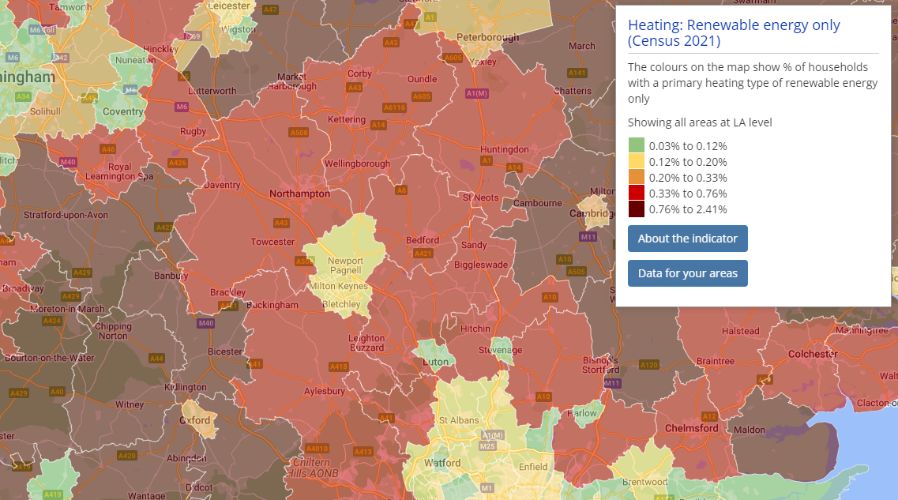
Housing topic summary covers:
- Accommodation Type
- Car ownership
- Central heating
- Heating type
- Number of Bedrooms
- Number of Rooms
- Occupancy rating of bedrooms
- Occupancy rating of rooms
- Second address type
- Second addresses
- Tenure
What’s changed?
Accommodation type:
- A new category has been created called Part of another converted building (for example, former school, church or warehouse). This means that there are some changes to the way people who live in flats answered this question.
Number of bedrooms / rooms:
- The category 0 bedrooms has been removed
- The data for ‘number of rooms’ uses Valuation Office Agency (VOA) administrative data for the first time in 2021 (rather than self reported) and cannot be compared to 2011 data.
- In 2021, the number of rooms is recorded at the address level, whilst the 2011 Census recorded the number of rooms at the household level. This means that for households that live in a shared dwelling, the available number of rooms are counted for the whole dwelling by VOA, and not each individual household.
Second address
- Two categories have been added for Purpose of second address. These are Partner’s address and Second address type not specified.
Communal establishment type
- The category Medical and care establishment: Registered Social Landlord/Housing Association: Sheltered housing only has been removed from this variable. This is because it is now counted as a household instead of a communal establishment.
Central heating
- Two new categories have been added; Renewable energy (for example, solar thermal or heat) and District or communal heat network.
- The category Gas has been split into Mains gas and Tank or bottled gas.
- The category Wood (for example, logs, waste wood or pallets), has been separated from Solid fuels
Sexual orientation and gender identity
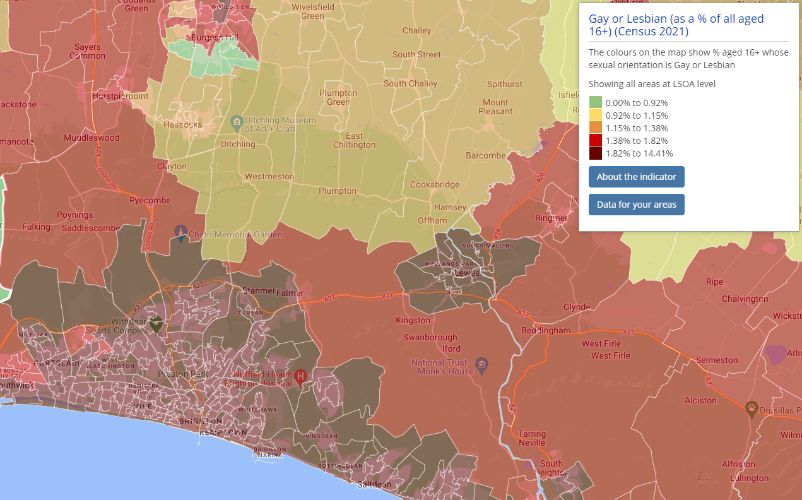
The sexual orientation and gender identity topic summary covers:
- Sexual orientation
- Gender identity
- Non respondents to these questions
What has changed?
These are new variables published for the first time in 2021, so there are no previous iterations to compare to.
The questions on sexual orientation and gender identity were also voluntary. In total, 92.5% of the population aged 16 years and over answered the question on sexual orientation and 94.0% of the population aged 16 years and over answered the question on gender identity.
Education
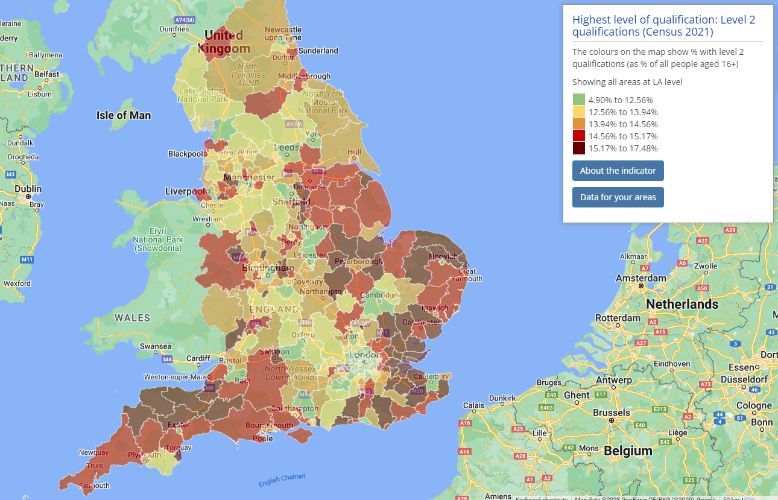
The Education topic summary covers:
- People with no qualifications
- Highest level of qualification
- Student
What’s changed?
Highest level of qualification
- The categories are the same but the question was revised and split up to group together different qualifications, so the way people answered the question in Census 2021 cannot be fully compared with the answers from the 2011 Census.
- For example, some people who hold an older or non-UK qualification when answering the question in Census 2021 may have chosen a higher qualification level than they did in the 2011 Census, although they hold the same qualifications.
Student
- The category Schoolchildren and full-time students has been removed and replaced with Student for 2021.
- In 2011, people aged 4 years and over were included in the question, whereas for Census 2021, only people aged 5 years and over were included.
Health, disability and unpaid care
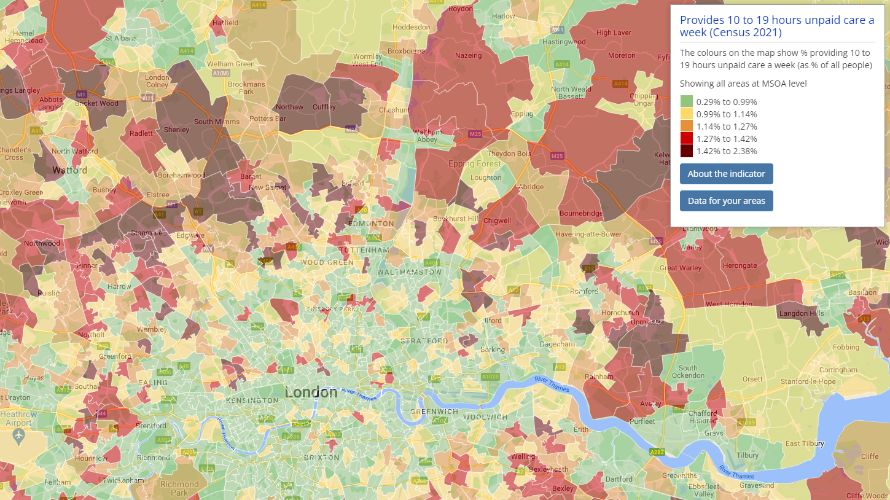
The topic summary covers:
- Disability
- General health
- Number of disabled people in the household
- Provision of unpaid care
What’s changed?
Disability
- The question changed in order to collect data that more closely aligned with the definition of disability in the Equality Act (2010).
- To identify disability in England and Wales, ONS asked people “Do you have any physical or mental health conditions or illnesses lasting or expected to last 12 months or more?”. If they answered yes, a further question “Do any of your conditions or illnesses reduce your ability to carry out day-to-day activities?” was presented.
- The identification of disability differs from the 2011 Census question used, which asked “Are your day-to-day activities limited because of a health problem or disability which has lasted, or expected to last, at least 12 months?”
- The way disabled people are identified has therefore changed between 2011 and 2021 and this may have had an impact on the number of people identified as disabled.
Unpaid care
- There are now different categorisations for the hourly figures of unpaid care
- In 2011, data was published as those providing 1 – 19 hours of unpaid care. For 2021, this has been split into less than 9 and 10 – 19.
- In 2011, data was published as those providing 20 – 49 hours of unpaid care. For 2021, this has been split into 20 – 34 and 35 – 49.
The Census 2021 data can be explored in depth within Local Insight. Book a demo today
Featured posts

Case studies
A new need for deeper place-based insight When Arts Council England launched…
More









